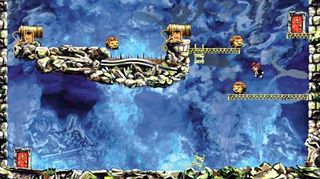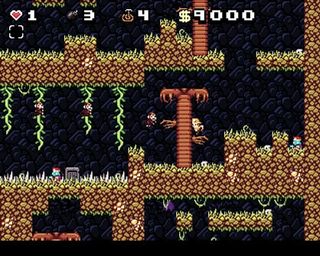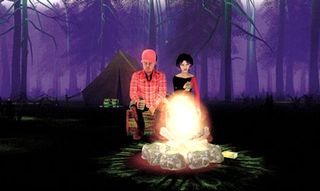How indie games took on the world (and won)
Meet the maverick heroes of game development
“We did OK with just word of mouth,” says Ron Carmel. “We sold about 3,000 copies of the game as pre-orders and sales on our website have done really well for us and still bring in a good amount. But there have been three promotional events that were huge for us. One was Nintendo of America sending an email to everyone who has their Wii only saying ‘Hey, check out World of Goo!’ Another was the 75%-off sale we had on Steam. And most recently, the MacHeist bundle. Each of those generated massive, massive sales and without them we would probably have sold about half the number of copies that we did.”

Edmund McMillen, meanwhile, tends to put in a bit more promotional elbow grease himself, but in characteristically oddball ways. “I try my best at promoting my work in any way I can. Honestly I don’t know how important it is. I just do it because it’s fun. Like that Hitler Meat Boy ad [‘Hitler was a vegetarian. Don’t be like Hitler’] – of course I put it out because I knew people would pick up on it... and being indie what other options do I have for self promotion? I have no money... so how do I get an ad for my game out to the masses? I simply say if you don’t like the game you’re like Hitler and tada – people post our ad on their websites. Now at this point I have no idea if this will help sales – but I did it for the same reasons I make games, to entertain myself.”
Dylan Fitterer also relies on third-party promotion. “Audiosurf was spreading way beyond my expectations before it was on Steam, but then being featured there gave it a big multiplier. It’s a little fuzzy though because Steam brings extra value to games – not just exposure. For example, it’s usually not Steam that first exposes games to me, but I do prefer to buy them there. Also, it’s gotten hard to tell what to call third-party promotion. Online media coverage and online word of mouth are both blogs.” Which in turn feed major websites and – hey! – magazines, and then good folk like you get to hear about these incredible little games.
Vic Davis has a slightly different approach. “It’s not that hard to stand out at all if you decide to seek out your own niche. If you want to make an iPhone or casual match 3/hidden object game, then good luck with that. In my case, the space that I am competing in is like one of those old west ghost towns. Ten years ago there was a booming turn-based strategy game genre. Today, not so much. Turn-based strategy games don’t fit the blockbuster business model with the arguable exception of the Civ franchise. My games are pretty complex and geeky though, so my niche is even more restricted. But that’s my selling point and a way to stand out in the crowd. I’m going for the demographic that will read the manual eventually even if they are the type of player who first likes to sit down and just start clicking buttons.”

Above: Spelunky is randomly generated love
So, ‘indie’ is at an absurdly exciting and diverse time at the moment. But what brought about this new era of independent game-making?
“I think people have grown bored of being force-fed the same old shit from the same old people over the years,” says McMillen. “My wife is an indie artist in the plush art scene and its having a similar boom these days as well. We live in a world where everyone has access to everything, at this point when you want to see a movie you have about 15 ways of doing so with a few clicks of a mouse. In a world where anyone can tap into the flood of mainstream crap with a click of the mouse people are desperate for something new, something fresh and exciting. Do you want to spend 50 bucks on the next WWII shooter? Or do you want to play a game where you control a bloody chunk of meat? The indie scene has something to offer that the mainstream will never have, it has heart, and for the most part it’s honest, pure and untainted by money. Out of everything I think those are the qualities that bring people in.” Clearly, it also has developers capable of genuinely inspiring words.
Sign up to the GamesRadar+ Newsletter
Weekly digests, tales from the communities you love, and more
Of course, there are practical reasons for the boom too. “I think it’s a combination of chance and opportunity” says Ron Carmel. “The opportunity is digital distribution. The chance is that 2008 was a huge year for indies. It saw a whole bunch of indie hits like Audiosurf, Braid, Eden, World of Goo, and Castle Crashers. Most of these games have been years in the making, it’s just chance that they all came out in the same year. So I’m guessing that this boom is smaller than people think. I don’t expect 2009 to be as big a year for indies as 2008, but I do think that there’s a growth trend in the indie scene, more people are entering the game industry by simply making games instead of getting game jobs. You can see that by following the number of submissions to the IGF over the years.”

Above:The Pathshows players how lumberjacks and seemingly hot chicks drink beer in the woods
Dylan Fitterer, meanwhile, points out another possible cause: “I see a lot of players asking how games run on netbooks rather than wondering which GPU features they have. Hardware advances and content quality have gotten less interesting. Content improvements don’t play to the strengths of gaming the way interactivity improvements do.”
Guys like Dylan, like 2D Boy, Edmund McMillen and Vic Davis are changing gaming as we know it – evolving it into something new and endlessly diverse, made from love and wonder rather than commerce. And yet, at the same time we’re going backwards – this is a bigger, bolder return to the way games development once was, when tiny teams free of publisher interference were releasing some new slice of crazy wonder every week.
Jul 13, 2009












